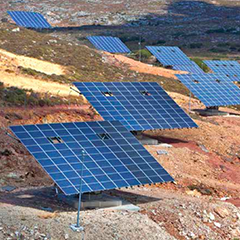If the industry has learned anything in the past 12 months, it’s that the world is changing; new markets are springing up in untapped territories while hitherto buoyant regions are becoming decimated by Feed-in Tariff reductions and fierce competition. The IEA has just taken the temperature of the global situation, and we’re delighted to be able to present you with all the essential information.
The role of renewable sources in the global power mix continues to increase. On a percentage basis, renewables continue to be the fastest-growing power source. As global renewable electricity generation expands in absolute terms, it is expected to surpass that from natural gas and double that from nuclear power by 2016, becoming the second most important global electricity source, after coal. Globally, renewable generation is estimated to rise to 25% of gross power generation in 2018, up from 20% in 2011 and 19% in 2006.
Driven by fast-growing generation from wind and solar photovoltaics (PV), the share of non-hydro renewable power is seen doubling, to 8% of gross generation in 2018, up from 4% in 2011 and 2% in 2006. In the Organisation for Economic Co-operation and Development (OECD), non-hydro renewable power rises to 11% of OECD gross generation in 2018, up from 7% in 2012 and 3% in 2006.
Renewable electricity growth is expected to accelerate over the medium term. From 2012-18 renewable electricity generation should rise by 40%(1 990 TWh or 6% per year[/yr]), from 4 860 TWh to 6 850 TWh. This growth in generation is 50% higher than the 1 330 TWh increment registered over the 2006-12 period. Generation in 2017 is seen 90 TWh higher than that projected in the Medium-Term Renewable Energy Market Report 2012 (MTRMR 2012).
Total renewable capacity is expected to grow from 1 580 gigawatts (GW) in 2012 to 2 350 GW in 2018. While hydropower remains the largest renewable source, a portfolio of non-hydro renewable sources – bioenergy, wind, solar PV, solar thermal electricity from concentrating solar power (CSP) plants, geothermal and ocean power – grows more rapidly.
The roles of biofuels for transport and renewable heat are also increasing, though at slower rates than renewable electricity. Global biofuels production is expected to rise by over 25% from 2012 to 2018, reaching 2.4million barrels per day (mb/d) in 2018. Biofuels output, adjusted for energy content, should account for 3.9% of global oil demand for road transport in 2018, up from an estimated 3.4% in 2012 and 1.5% in 2006.
Still, biofuels face short-term production challenges, including the slow development of advanced biofuels, sluggish oil demand growth in some areas and policy uncertainty regarding the sustainability of feedstock supply chains. Global final energy use of renewable sources for heat, excluding traditional biomass, is expected to grow by 24% over 2012-18 to reach 18 exajoules (EJ). As a portion of final energy consumption for heat, renewable sources should rise to almost 10% in 2018, from over 8% in 2012 and under 8% in 2006.
Complex deployment dynamics and market transitions





















